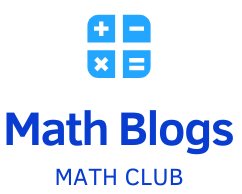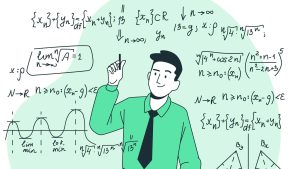Students need more than facts and procedures in order to effectively master math; they also require being able to utilize mental calculation strategies.
Approaching new concepts by modeling and manipulatives can help students gain a better grasp of the big picture. Hands-on methods turn abstract knowledge into concrete experiences that make understanding concepts much simpler for all students.
1. Addition
Addition is one of the core math skills that students must learn, often starting off by counting with their fingers or on a number line. Later, however, students need to use multiple strategies in order to fully comprehend how numbers operate.
Students should become familiar with the doubles plus 1 strategy, which teaches students that adding two numbers together creates one greater than its original total. This strategy helps develop understanding of part-part-whole relationships while opening doors to more efficient mental addition strategies.
Partitioning is another essential addition strategy for students to master. This practice allows them to break large numbers down into smaller ones and better comprehend how their parts relate together, ultimately helping them complete more complex mental calculations.
Students just beginning adding three digit numbers must understand that regrouping is necessary in order to do the math correctly. They can practice this using physical ones, tens and hundreds blocks or place value charts; as their confidence builds they may transition onto empty number lines or other visual representations of this strategy.
2. Subtraction
Students need to master subtraction as one of their early skills. Subtracting differs significantly from adding, necessitating an understanding of place value as well as an ability to manipulate numbers.
Many students begin learning subtracting strategies by counting back. Although this method is helpful in beginning, as numbers increase it becomes cumbersome and cumbersome; thus it is crucial that a variety of different strategies be taught as effective ways of subtraction are essential.
At its core, subtracting involves breaking the problem down into smaller parts to see how they fit together (e.g. 7 – 4 = 3); using the hundreds chart to find an answer (53 – 29 contains two tens and nine ones; counting back from 29 will help find them); decomposing numbers that divide easily (e.g. 165 – 7 = 42; which can easily be broken into fives and twos for subtraction); changing numbers so as to be friendlier (e.g. 105 – 7 = 77).
Each student may need to spend more time on certain strategies than others; it is essential that all have access to different approaches so they can find one that suits them personally and prepare themselves for more complex mathematics problems in the future.
3. Multiplication
Multiplication is an essential foundational skill in math that students must understand to advance in math studies. Without this fundamental understanding of multiplication, other concepts like division and fractions become harder for them to grasp.
One of the first multiplication strategies students learn is arrays, visual rectangular representations that show a number divided into equal groups. This model illustrates to students that any number multiplied by itself remains equal regardless of which way it’s rotated; hence making this strategy an excellent place to start when teaching multiplication as it helps memorize times tables and develop an understanding of this complex process.
Teaching the commutative property can also be useful, which indicates to students that when multiplying numbers together it doesn’t matter in terms of order; this makes math simpler when adding two close numbers together like 9×17!
Students also learn clustering and lattice multiplication as ways of breaking down problems into smaller pieces that are easier for students to remember and recall. These models may prove especially helpful to those struggling with mastering standard algorithms by grade 5.
4. Division
Division is one of the more difficult math concepts students encounter. It forms an essential building block of multiplication and helps bridge addition and subtraction. There are various strategies teachers can employ to facilitate student understanding of division such as partitioning, standard algorithm, and arrays.
Elementary students often begin learning partitioning strategies that teach them to break a number into groups of ones, twos, fives and tens. This will enable them to quickly solve large division problems and is also useful when dealing with fractions later on.
Models are an invaluable aid to visualizing division problems and working out solutions. Manipulatives, such as tiles or blocks arranged into equal groups, are especially effective tools.
Once students become comfortable with partitioning and other models, they should be ready to learn the standard algorithm for division. This typically occurs during 5th grade; however some schools introduce it earlier. Students will require strong multiplication facts and times tables in order to be successful during this stage.
5. Fractions
Fractions can be difficult for young students, particularly in lower grades. Children often come into mathematics with an organic understanding of fractions as pieces of a whole because of sharing candy bags or splitting chocolate bars into equal serving sizes; they sometimes struggle with transitioning this understanding to recognize that fractions themselves expand the number system and can be compared against one another (Moderate Evidence/Tier 3).
To be successful with fractions, it’s vital that students develop an in-depth understanding of their meaning rather than memorize rules and procedures. Teachers should emphasize this meaning by teaching standard notation and word form and modeling how to use a number line, as well as creating visual representations such as models or drawings before embarking on operations like adding or subtracting fractions.
Teachers can help their students gain a stronger grasp of fractions by encouraging the creation or adaptation of word problems that integrate fractions into real-life situations such as sharing snacks or allocating resources. Furthermore, cross-grade collaboration should be encouraged so students can establish links between fractions and percentages used everyday situations such as shopping discounts calculations or interpreting statistical data.




